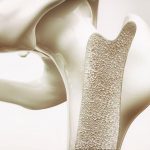
A lot of people are dealing with anxiety, depression or just general unhappiness. Worry, sadness, restlessness, irritability and trouble sleeping are just a few symptoms of depression and anxiety, according to the U.S. National Institute of Mental Health (NIMH). Therapy and medications can help. But some simple self-care ideas can lift a person’s mood and add a sense of peace and joy to everyday life. “Fortunately, there are things that people can do on their own, either in place of a professional mental health professional or while waiting in line to see someone either virtually or in person,” said James Maddux, professor emeritus in the Department of Psychology and senior scholar in the Center of the Advancement of Well-Being at George Mason University in Fairfax, Va. All of these techniques can help people dealing with the stress and emotional traumas of life to be happier, Maddux said. Mellow out with meditation Doing this quiet activity for just 10 to 20 minutes helps a person slow down and pay attention to what’s going in inside, Maddux said. “And research shows that those brief periods can carry over into the rest of the day,” Maddux added. Becoming more aware of what you’re thinking and feeling is a big step toward learning how to better manage thoughts and feelings, he said. “Mindfulness activities can be helpful for dealing… read on > read on >


















